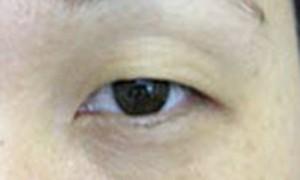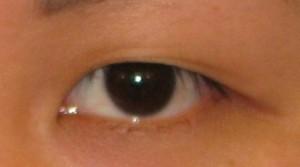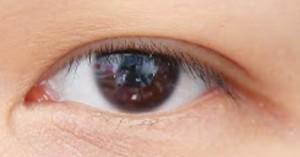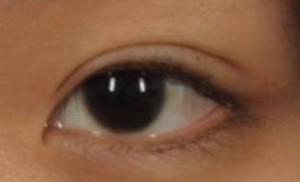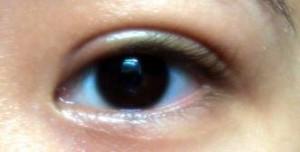The upper eyelid crease is what determines if you have a single eyelid (monolid) or double eyelid. Asian blepharoplasty, or double eyelid surgery deals with several kinds of upper lid procedures, but the primary focus is the upper eyelid crease.
If you are Asian, you may have one of several types of eyelid creases or you can have 2 different types, one for each eyelid. When I perform double eyelid surgery I aim to achieve similarity between the two eyes and to define and sometimes emphasize the eyelid creases.
Below are examples of the 6 main types of Asian eyelid creases:
Absent eyelid crease
This is known as the monolid, as there is no distinct eyelid crease separating the lid into two parts.
Partial eyelid crease
There is a crease but it isn’t well defined and it may not extend entirely across the eyelid. With age, the partial crease can become more defined as the skin above the crease becomes looser.
Multiple eyelid creases
Double eyelid surgery can be performed to merge multiple creases to form a single one. Multiple creases can occur after double eyelid surgery if the new crease does not coincide with previous creases.
Tapering eyelid crease
A tapering crease becomes more narrow toward the inner corner of the eye.
Tapering eyelid crease with lateral flare
The outer part of the eyelid platform is wider than the central part of the platform.
Parallel eyelid crease
The inner corner of the crease does not narrow as a tapering crease does.
I wrote a double eyelid surgery guide for the patients in my NYC practice that want to learn more about the different approaches to Asian eyelid surgery before they come in to see me for a consultation. You’ll find a link to the guide here where you can download a free pdf copy. The most important things you can do to ensure a good result after double eyelid surgery are to:
1. seek a surgeon with cosmetic eyelid training and experience
2. seek a surgeon with Asian eyelid experience
3. inform yourself about the procedure
4. learn about the types of eyelid creases (see 6 types above) and determine which type you think best suits you (in consultation with your surgeon)

